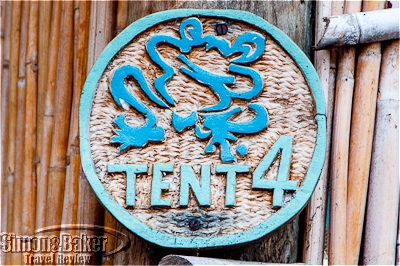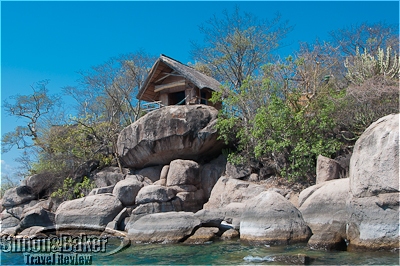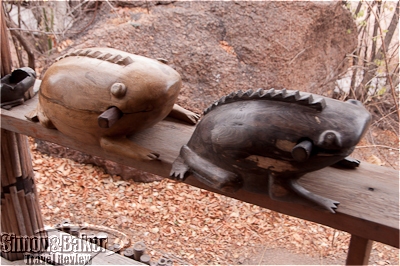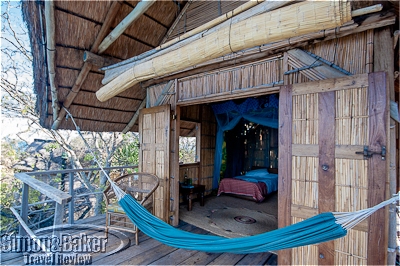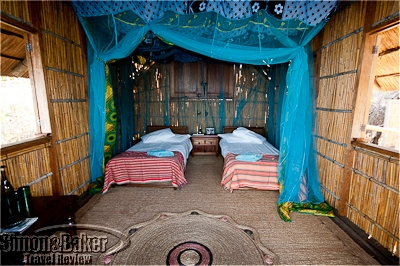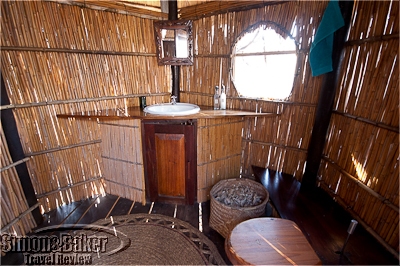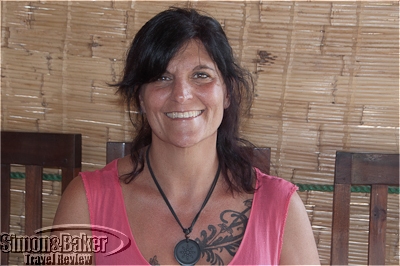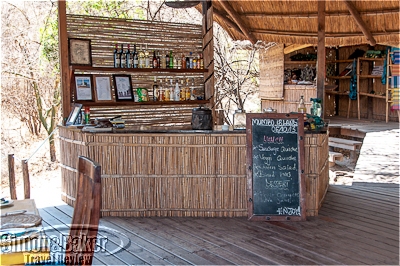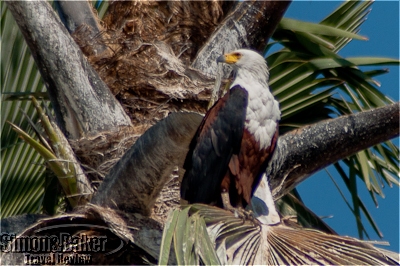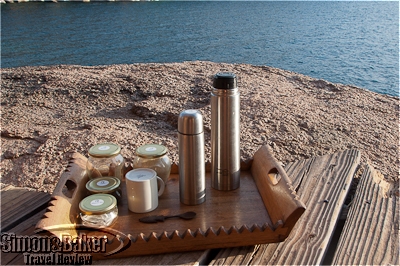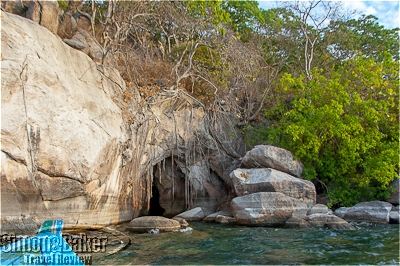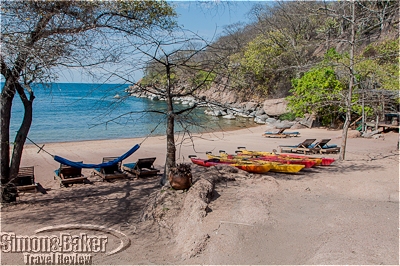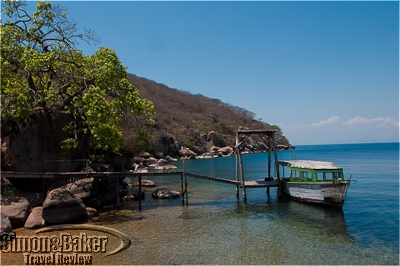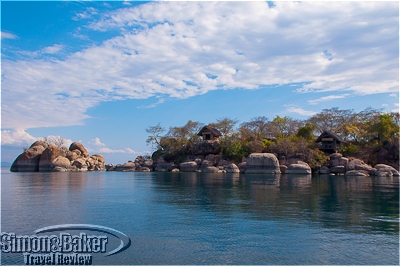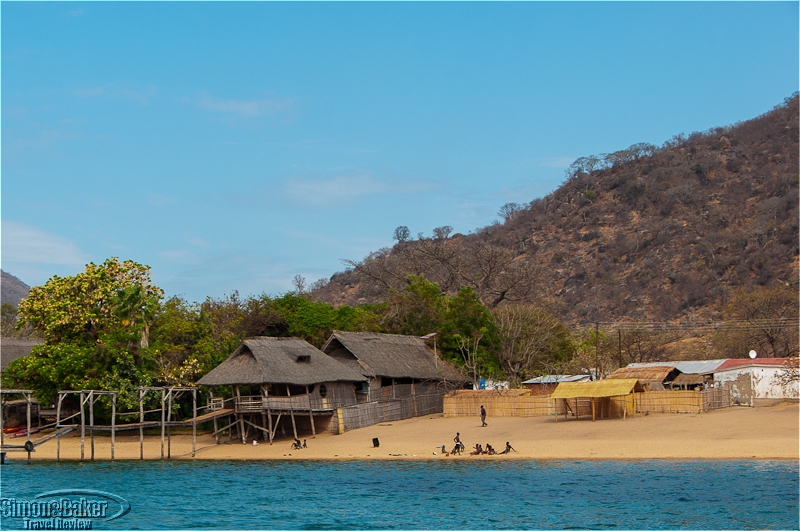
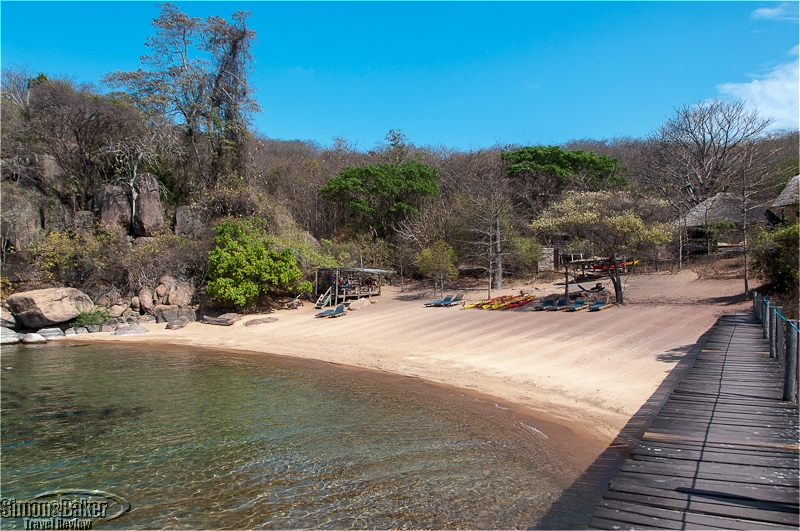
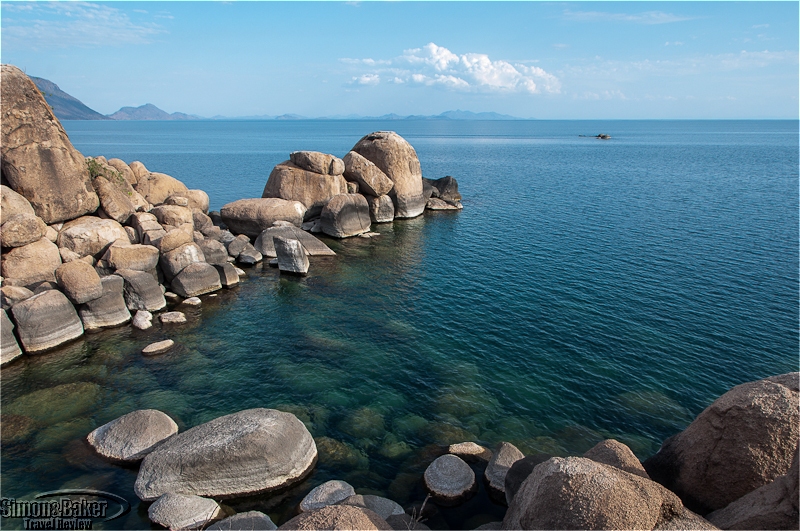
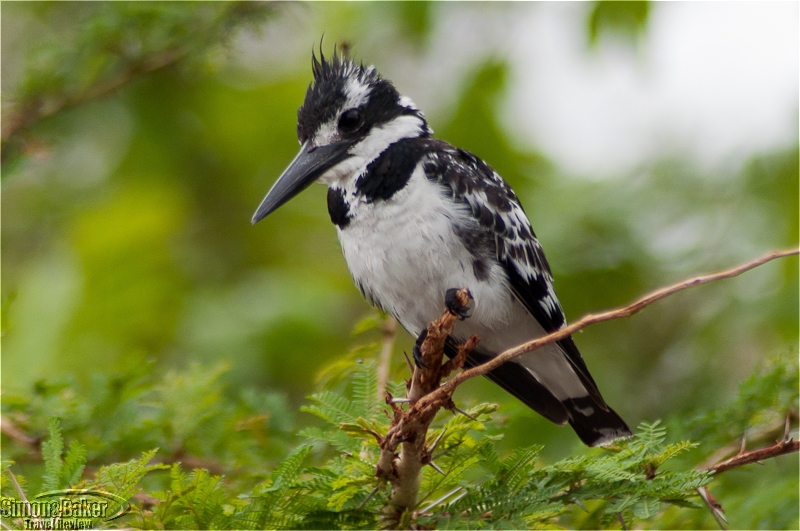
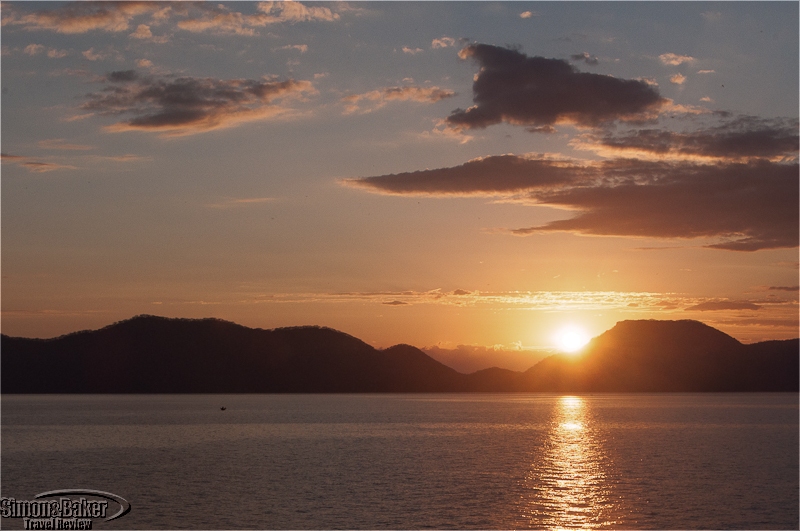
This was off the grid living at its idyllic best. Until the National Parks authorities first awarded Kayak Africa the exclusive rights to operate tourism accommodations on the one square kilometer (250 acres) island in 1996, it had never been populated. To preserve its unspoiled state, the company created a minimalist property run on uncompromising sustainable principles in harmony with the natural beauty of its unique lake setting and where life naturally fell into the primeval rhythms of the sun and the moon.
My days at the camp began at dawn with a wakeup call from a red billed hornbill enthusiastically welcoming the new day in the tree next to my room. I would then quietly settle on the terrace to contemplate the blood orange sunrise gently pale into a clear morning while small boats darted across the lake on their way home from a night of fishing. Sometimes during that time a staff member had delivered on silent feet a tray laden with tea and cookies at the edge of the terrace. Later, on my way to a hearty breakfast in the dining room, I would pause on the footbridge to take in the bright kayaks and lounge chairs neatly lined at the edge of the beach and the gentle crystal clear waves lapping at the freshly swept sand. Another day in paradise had begun.
After a day spent snorkeling among of cichlids, the small colorful fish that have evolved into endless varieties and for which the lake is famous, or rediscovering the bliss of hours whiled away in a hammock, I welcomed the staff’s invitation to watch the sunset. Around the island we cruised, to just the optimum stop to watch the sky morph into improbable shades of bronze to crimson to purple before fading to dark. Later at night, after a simple and delicious meal by the soft glow of paraffin lanterns, I returned to my room and settled on what I had quickly come to think as “My Rock” to watch the reflection of millions of diamond stars in the tranquil waters of the lake, and the horizon outlined by the myriad pinpoint lights of hundreds of fishermen trying to lure fish to their boats. Was it the stars or the fishermen that moved 19th century English missionary explorer David Livingstone to give the place the moniker of The Lake of Stars? Both, I reckon.
With the charm of simple accommodations enhanced by its strong responsible tourism ethos, warm and attentive staff, uniquely relaxing environment and the best freshwater snorkeling I have experienced, Mumbo Island Camp has become one of my most treasured African destinations.
Children The property welcomed children of all ages.
Class Of Accommodation Adventure eco camp.
Connectivity My GSM 3G/4G international cellular phone did not operate, nor was there any Internet connection on the island. However, 2G phone communications were possible with a GSM card from local service providers.
Handicapped Access Because of the topography of the small rocky island, it could not provide handicapped access.
Length Of Stay Three nights
Location An hour’s motorboat ride off Cape Maclear, on the southern shore of Lake Malawi. Cape Maclear, was a four hour drive east from Lilongwe, the capital, and five hours north from Blantyre, the country’s second largest city.
Owned-Managed Kayak Africa, a South Africa based company owned by Clive Bester and Jurie Shoeman, owned and managed Mumbo Island Camp.
Size The property consisted of five tents that could accommodate a maximum of 10 guests on the small island plus a twin tented family unit located in the forest near the beach and common areas on the main island. That unit could accommodate up four guests for a camp total of 14. Mumbo Island employed a staff of 20.
Year Open-Renovated The camp opened in 1996. According to staff, it has been the object of on going maintenance and enhancement ever since.
At the far end of the room, the bar had a reed covered backdrop and base with a polished wood top. To the right of the bar, a few steps led up to a small curio shop while to the left, a few steps led down to the lounge. Nestled under a baobab, the lounge had a roughhewn wooden sofa and a matching long coffee table that held a large hand carved bao game (traditional board game) always at the ready. Three pairs of reed woven barrel chairs separated by occasional tables were arranged around the room. All seat cushions were covered chitenjes cloth in shades of green and black. A small red hand painted wooden chest completed the décor.
Room My 15 square meter (160 square foot) tent, Number Four, was a simple reed and thatch room perched on a huge granite boulder overlooking the dazzling waters of the lake. The back and side walls had open window frames with reed blinds and wooden shutters. The wall facing the lake was fully open to the endless view. Large reed double doors could be closed in case of inclement weather. The floor was covered with a wall to wall handwoven straw mat with a matching circular throw rug in the center of the room. At the rear of the room, twin beds with woven bamboo headboards were separated by a wooden bedside chest. The entire sleeping area was enclosed at night by billowing blue mosquito netting edged with chitenjes cloth in shades of green and gold. On the left side of the room under the side window, a sturdy hand built wooden coffee table held a bottle of drinking water and two glasses made of recycled wine bottles. A ceramic dish served as a paperweight for a small assortment of magazines on wilderness related topics. On the opposite side of the room, a bamboo luggage rack and a tall canvas shelving unit on a bamboo frame provided storage. On the rocky ledge at the front of the room, two reed barrel armchairs and a dark blue canvas hammock created an ideal lounging space for reading, star gazing, bird watching or simply dozing off while contemplating the mesmerizing beauty of the lake.
Beach The beach had all the charm of a remote tropical ocean resort, minus the salt and surf. There were eight lounge chairs with royal blue canvas cushions and a matching hammock strung between two shade trees. It was an ideal spot to relax between swims and snorkeling sessions, or to enjoy the antics of a colony of bright yellow southern masked weavers endlessly engaged in nest building activities. At the far end of the beach, in the water sports gazebo Owen, a boatswain and guide, was ready to dispense warm smiles along with the right snorkeling equipment, kayaking instruction, and in my case paddling assistance, or to lead a snorkeling expedition in some of the best fish viewing nooks around the island.
Facilities There was a dining room and bar, lounge, curio shop, water sports gazebo and a massage deck.
Gift Shop There was a small curio shop with a selection of textile items, knickknacks and jewelry by local craftspeople.
Wildlife viewing Other than the ubiquitous rainbow skink (small, brightly colored lizard), monitor lizard and one inquisitive brown spotted necked otter occasionally sighted observing us on offshore rocks, wildlife on the island consisted mainly of birds, with African fish eagle, white breasted cormorant, pied king fisher and southern masked weavers a constant sight. Other birds I sighted included red billed hornbill, African harrier hawk, reed cormorant, green backed heron, spectacled weaver, blue waxbill, red capped robin chat and white tailed swallow.
Electricity on the island was solar generated. It was produced in quantities sufficient to power the water pump and charge solar lanterns for the guest accommodations, and to use along the walkways where lighting was required all night. Each room also had a wind up flashlight. Additional lighting around the camp was provided by paraffin lanterns. Any personal electronic equipment had to be transported back to the mainland for overnight recharging. It was returned the next day.
The property was constructed mainly with plantation timber. Chemically treated timber was used only when absolutely necessary. Other construction materials were from renewable local resources, mainly bamboo, grasses and reeds, and a limited amount of canvas. While the original guest accommodations had been walk in tents under thatch, these were progressively being replaced by new reed and lumber rooms. The camp’s water supply was pumped from Lake Malawi via a solar powered pump. A gasoline powered backup pump was available. Water was purified through silver impregnated ceramic filters and suitable for drinking as well as oral hygiene.
Date Of Visit October 2013
Reviewers Article and photographs by Josette King
Service My tent was serviced twice daily. Every member of the staff with whom I came in contact was friendly and attentive.
Would You Stay There Again? Yes
Contact Information
- Kayak Africa
- Cape Maclear
- Malawi
- Emergency:
- +27 (0) 21 783 1955
- +265 (0) 99 994 2661
- +27 (0) 21 706 9771
